Henri Cartier-Bresson, often hailed as the father of modern photojournalism, is renowned for his ability to capture fleeting moments with a unique blend of artistry and precision. His photographs not only document history but also evoke emotion and tell stories in a single frame. Over his illustrious career, Cartier-Bresson created a legacy of iconic images that have left an indelible mark on the world of photography.
In this article, we explore ten of his most famous photographs, examining the moments behind them and the reasons why they continue to captivate audiences worldwide.
You can find Henri Cartier-Bresson on the Web:
1. Behind the Gare Saint-Lazare (1932)

This photograph, often referred to as the quintessential example of Cartier-Bresson’s "decisive moment," captures a man leaping across a puddle behind the Gare Saint-Lazare in Paris. The reflection, the perfect timing, and the dynamic composition make this image an iconic representation of his philosophy that great photography captures fleeting moments of balance and harmony.
2. Rue Mouffetard (1954)
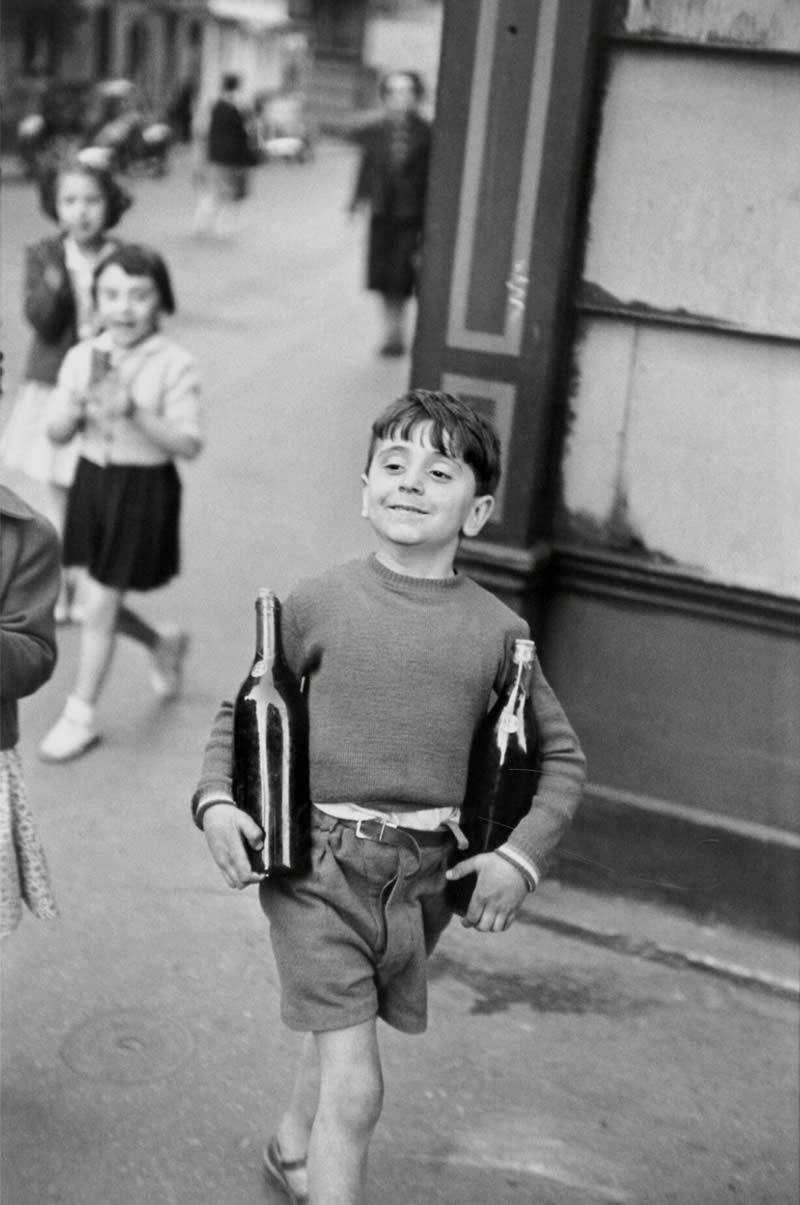
In this charming image, a young boy proudly carries two large bottles of wine down a Paris street, his grin infectious. The photo’s timeless appeal lies in its candidness and universality, symbolizing the simple joys of childhood and the culture of post-war France.
3. Gestapo Informer at Dessau (1945)

This photograph, taken during Cartier-Bresson’s work documenting the aftermath of World War II, shows a woman accused of being a Gestapo informant confronted by a camp survivor. The raw emotions on display, combined with its historical significance, make it a powerful and enduring image.
4. Hyères (1932)
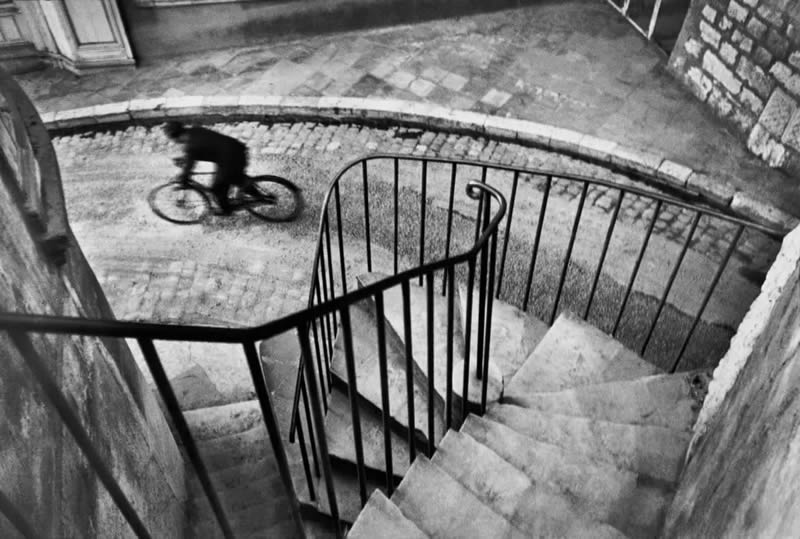
Featuring a cyclist captured in mid-motion on a spiral staircase in the French town of Hyères, this photograph showcases Cartier-Bresson’s mastery of geometry and composition. The interplay of curves and lines creates a sense of movement and elegance, turning an everyday scene into art.
5. Man Jumping Over a Puddle, Paris (1930s)
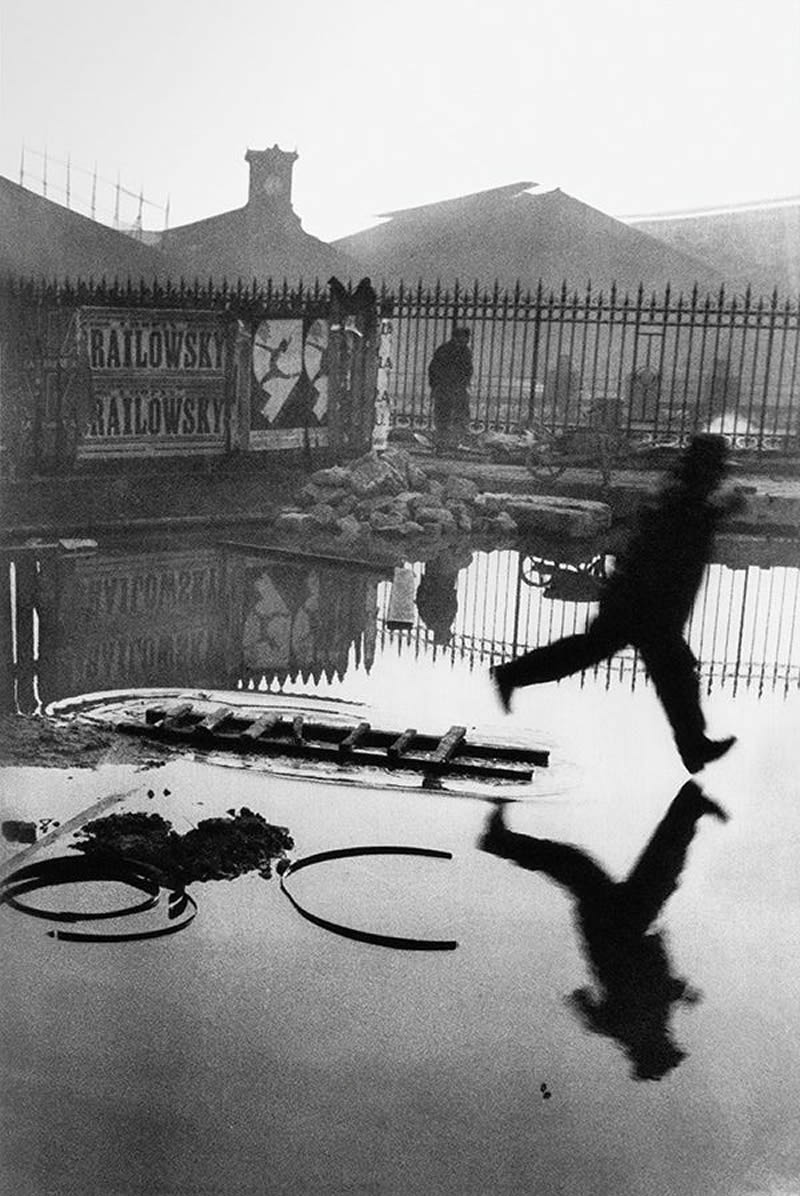
Another example of Cartier-Bresson’s "decisive moment," this photo captures a man mid-leap, creating a sense of weightlessness and spontaneity. The layered elements in the frame—including reflections, fencing, and the man’s silhouette—are meticulously balanced, illustrating the photographer’s keen eye for detail.
6. Seville (1933)
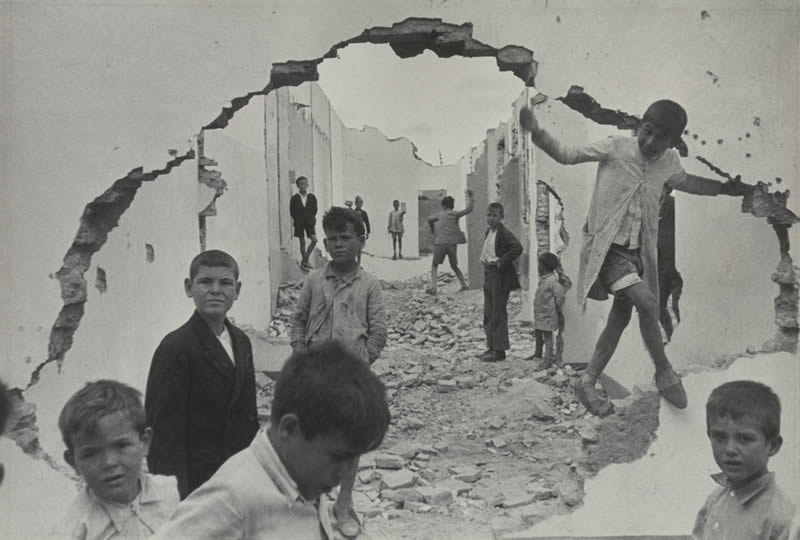
This haunting image, taken in a slum in Seville, Spain, depicts children peering through a torn wall. The stark contrast between light and shadow amplifies the photo’s emotional weight, shedding light on the harsh realities of poverty with dignity and sensitivity.
7. Henri Matisse in His Studio (1944)
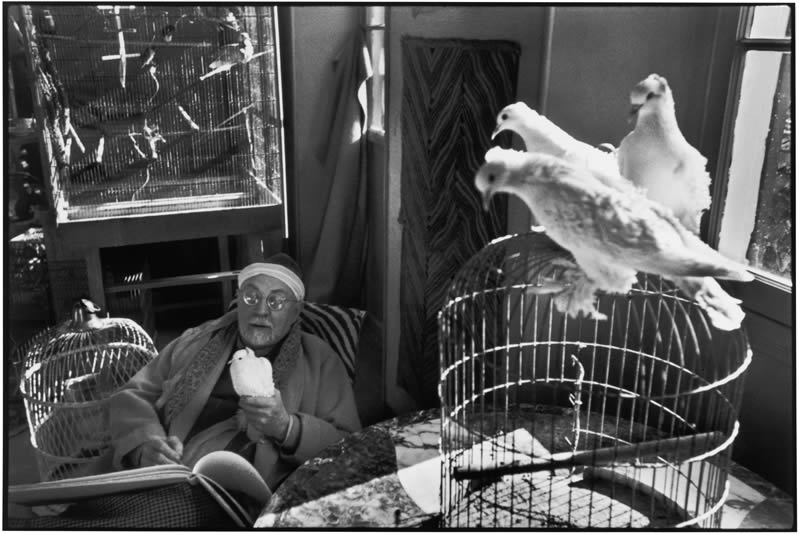
In this intimate portrait of the great artist Henri Matisse, Cartier-Bresson captures him surrounded by birds and cutouts in his studio. The photograph reflects both the personality of the subject and Cartier-Bresson’s ability to blend storytelling with composition.
8. The Coronation of King George VI (1937)
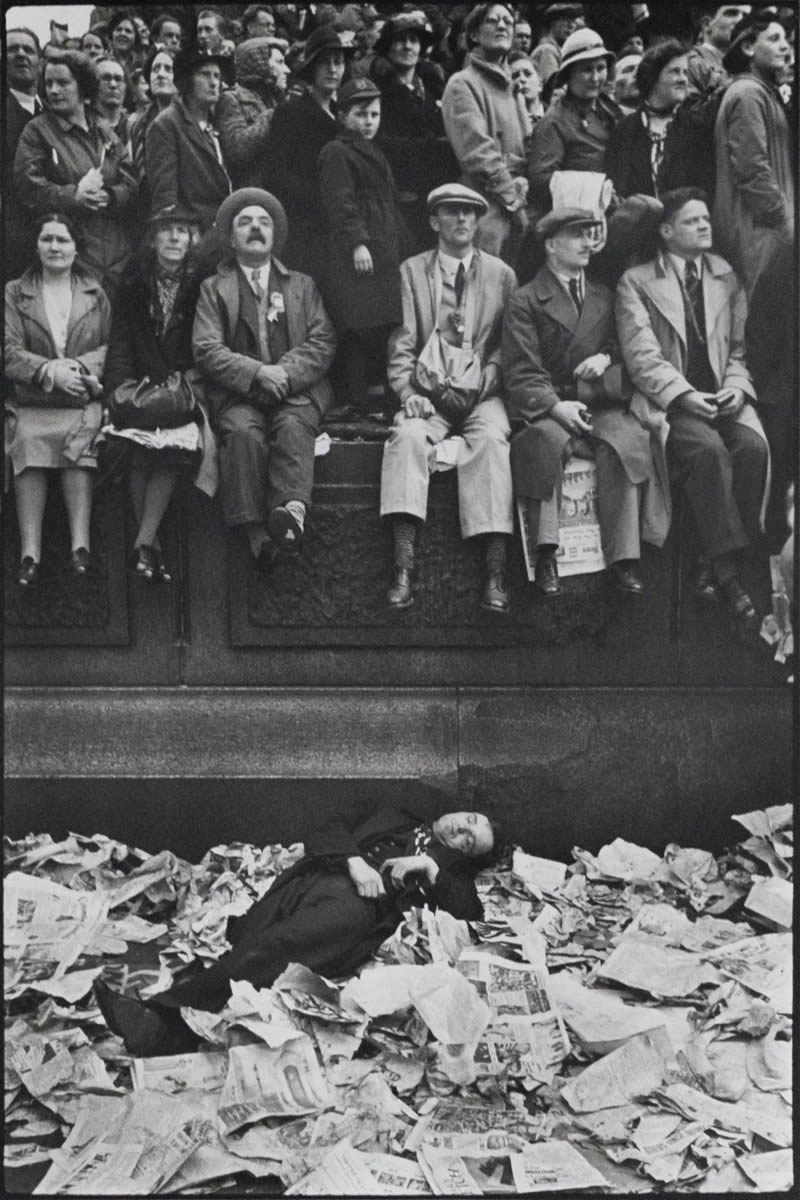
Taken during the coronation of King George VI in London, this image doesn’t focus on the pomp and grandeur but rather on the spectators peering through a fence. The choice of perspective humanizes the historic event, highlighting Cartier-Bresson’s unique approach to photojournalism.
9. Shanghai (1948)
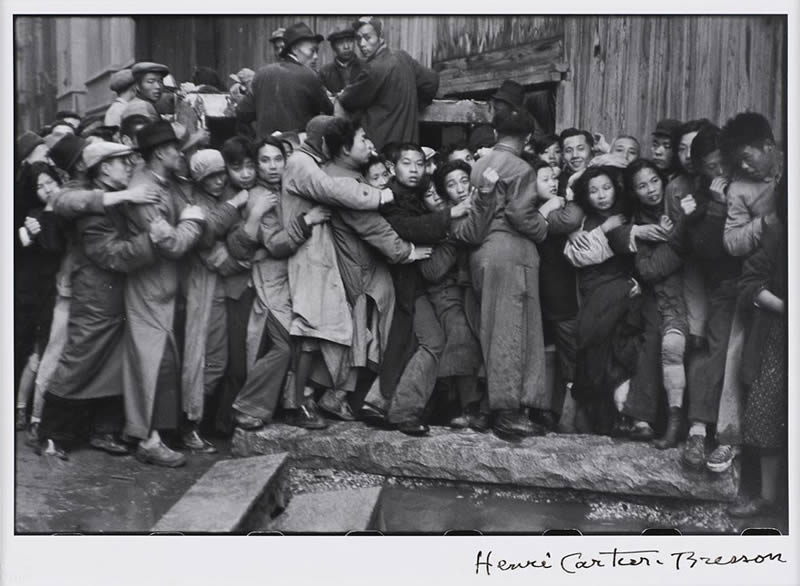
This iconic image captures a chaotic scene during the financial collapse in Shanghai, with people frantically trying to withdraw their money from a bank. The photograph’s dramatic tension and historical context make it one of Cartier-Bresson’s most significant works, embodying his ability to document critical moments in history.
10. Srinagar (1948)
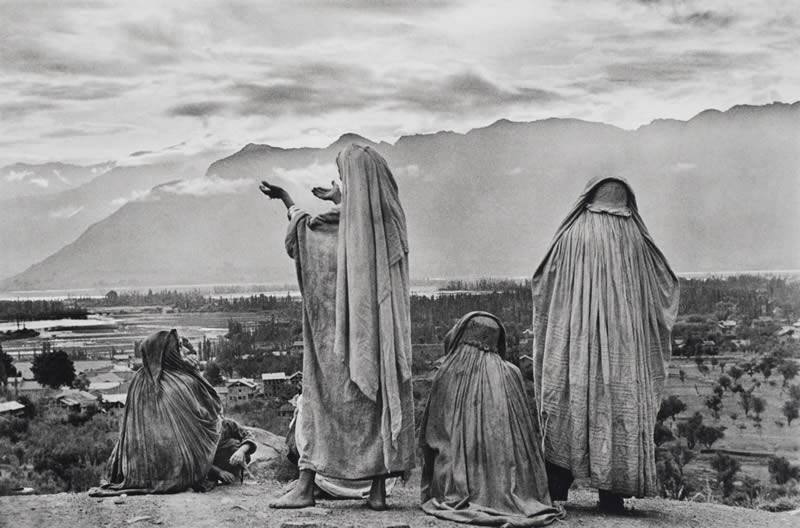
In this serene and poignant photograph, women are seen praying by the riverbank in Srinagar, India. Taken during Cartier-Bresson’s travels in India, the image captures a moment of spiritual reflection and showcases his talent for blending human emotion with natural beauty.
Why These Photos Are Famous
Henri Cartier-Bresson’s photographs are celebrated for their composition, timing, and emotional resonance. Each image exemplifies his philosophy of the "decisive moment," where the perfect alignment of elements creates a timeless and impactful scene. His ability to document human experiences with sensitivity and artistic finesse has made his work enduringly influential in the world of photography. Whether capturing historical events or intimate moments, Cartier-Bresson’s legacy lies in his unparalleled skill in turning ordinary scenes into extraordinary narratives.
Related Articles:
- Master Photographer Bruno Barbey: A Visionary of Color and Human Experience
- Master Photographer Alex Webb: A Journey Through Color, Culture, and Human Connection
- Master Photographer Elliott Erwitt: A Life Through the Lens of Wit, Humanity, and Timelessness
- Master Photographer Steve McCurry: A Legacy in Visual Storytelling




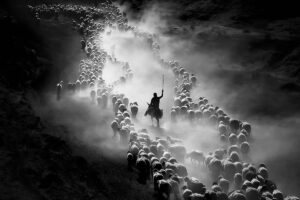
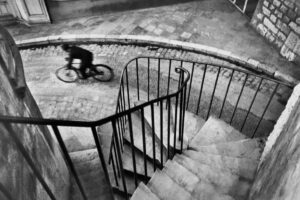
 English (US) ·
English (US) ·